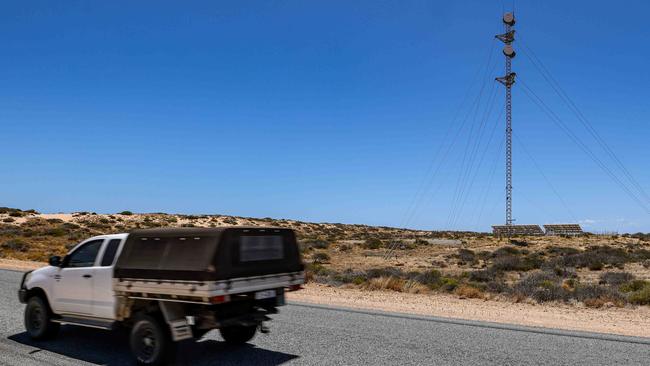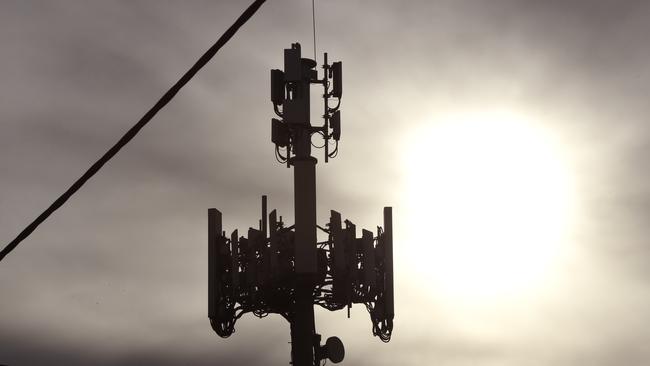Why Telstra was denied a place in regional mobile fight
The Australian Competition and Consumer Commission has put a ceiling on Telstra’s ability to grow in the retail mobile market.

The competition regulator has effectively put a ceiling on Telstra’s ability to grow in the $15bn retail mobile market beyond any organic levers, arguing that, if anything, its sheer size has already given it significant structural advantages over rivals.
That is the takeout from the ACCC’s 216-page reasoning as to why Telstra should be denied a mobile network sharing arrangement with the smaller TPG-Vodafone across rural and regional Australia.
The reasons include substantial redactions of commercial-in-confidence material that the ACCC used as part of its seven-month investigation in the planned tie-up.
The full reasons followed the ACCC issuing its preliminary findings rejecting the proposed deal on Wednesday.
Telstra is clearly the problem for the ACCC, given it argues a network sharing deal will further entrench Telstra’s market power “by giving it a unique opportunity to improve its spectrum advantage over Optus”. It says the enduring boost from the deal given to Telstra would be significant.

Any network deal was likely to result in a cost disadvantage for Optus, would give Telstra increased economies of scale, and prevent smaller rivals improving their competitive position by entering into alternative network sharing arrangements, the ACCC said.
However, the regulator is taking a big bet through this week’s decision, even acknowledging there will be a short-term boost to services for regional mobile users through the combination of Telstra and TPG spectrum.
The finding essentially pushes TPG aside and argues that the real battle is between Telstra and Optus.
A network deal would have meant TPG could start selling ultra-fast services in regional Australia as early as next year, using that to bundle its own NBN broadband internet offering in the same market. Extended reach in regional Australia would also help strengthen TPG’s marketing message as it competes against Telstra and Optus in the cities.
But the ACCC insists that any benefits in coverage will be quickly eroded through the prospect of higher mobile prices and poorer service by Telstra in the medium to long run. At the same time, any advantage given to Telstra/TPG would eventually see Optus throw in the towel and opt to compete less in regional Australia, the ACCC says.
It says Telstra’s first-mover advantage in the Australian mobile market means its position becomes even more entrenched through every generation upgrade of technology.
On a national test, Telstra has a 44 per cent share of the mobile market over Optus with 33 per cent.

But the market share changes substantially by geography. Telstra’s share of customers in outer metropolitan areas is bigger than its national share, while it dominates customers in regional and remote Australia.
Crucially, the former Turnbull federal government’s decision to ban Chinese telco equipment maker Huawei in 2018 also played into the ACCC’s reasoning. It notes that Optus has been hindered with higher costs and a slow pace of its 5G rollout given its long-term partnership with Huawei in the use of 4G.
This means existing 4G Huawei equipment has to be decommissioned and replaced before a site can be upgraded to 5G. Telstra, which uses different equipment suppliers, is not affected by the policy.
But all roads in the ACCC’s reasonings head back to Telstra, which the regulator describes as having a high degree of market power. Even without the proposed mobile sharing deal, “(Telstra) has the largest amount of spectrum available to provide mobile services; its network coverage is greater than that of its rivals; it earns higher (average revenue per user) than Optus and TPG; and it has the largest market share by number of subscribers and revenue”.
“Telstra’s position of strength in regional and rural areas of the country is even more noticeable,” it says.
The ACCC looked through the temporary arrangement – eight years – of the network sharing deal. Even if both Telstra and TPG walked away at the end, the competitive advantages given to Telstra “would be enduring”.
Both Telstra and TPG have said this week they oppose the findings and plan to appeal against the ACCC’s decision with the Australian Competition Tribunal. Filings by Telstra and TPG are due in three weeks. Any decision is expected by the middle of the year.
BHP-OZ break fee
BHP has negotiated a break fee of $95m, or nearly 1 per cent, if the $9.6bn mega-deal for copper play OZ Minerals falls apart. That seems increasingly unlikely after BHP and OZ sign off on a formal merger agreement, putting BHP boss Mike Henry one step closer to securing new long-life copper and nickel assets.
The buyout gives BHP a portfolio of tier-one resources within reasonable proximity to its existing operations, including the giant Olympic Dam in South Australia’s far north.
The theme plays into BHP’s future-facing commodities profile – particularly copper, which is set to get a lift on renewables development. BHP also gets access to cashflows from existing operations from day one.
The merger agreement follows four weeks of due diligence, and the deal includes the provision for BHP to have matching rights in the highly unlikely event that anyone else comes over the top at the eleventh hour.
The break fee, set to cover transaction costs, is the lower end of the usual break fee range between 1 per cent to 3 per cent. It can often be a barometer for certainty over a deal. Nervous bidders seek to extract higher fees. Critically, OZ shareholders get a franked dividend of up to $1.75 and, while this comes off the price of the takeover offer, it will be more tax-effective for most shareholders who have bought in below the $28.25-a-share offer price.
The move comes as OZ this week issued a material upgrade to its ore reserves and resources at its flagship Prominent Hill copper mine. A scheme meeting of OZ shareholders is expected to be held in late March or early April.
BHP has timed its move to perfection, the merger agreement coinciding with China’s reopening from Covid-19 lockdowns, albeit along a bumpy path. Since the start of November, copper prices have jumped 14 per cent and nickel a hefty 30 per cent.
After two rounds of talks the OZ Minerals board blessed the deal, which delivers $28.25 a share in cash. The final price represents a generous 49 per cent premium to OZ’s pre-bid close.
johnstone@theaustralian. com.au




To join the conversation, please log in. Don't have an account? Register
Join the conversation, you are commenting as Logout